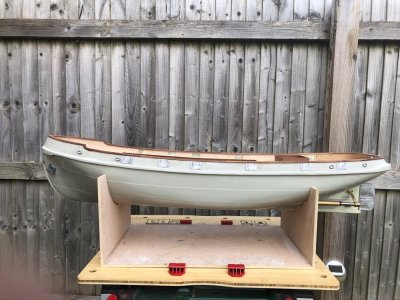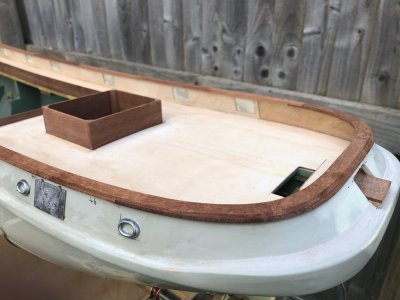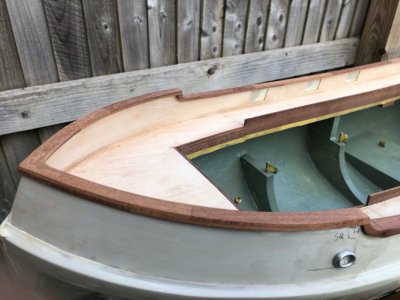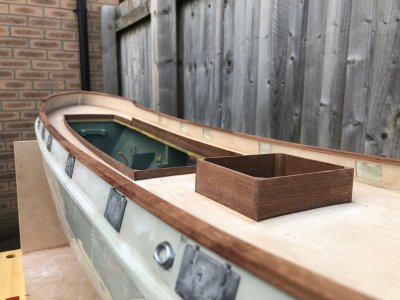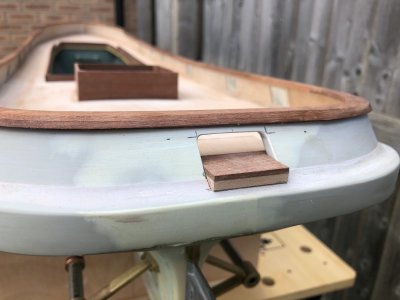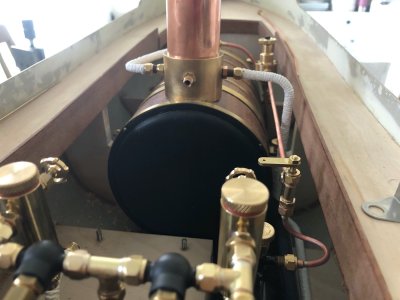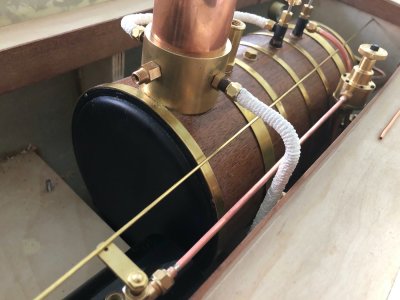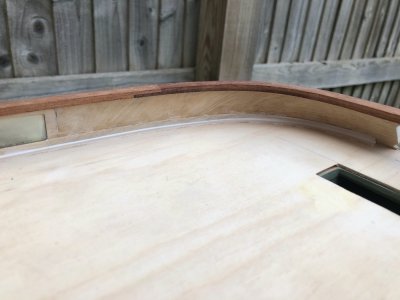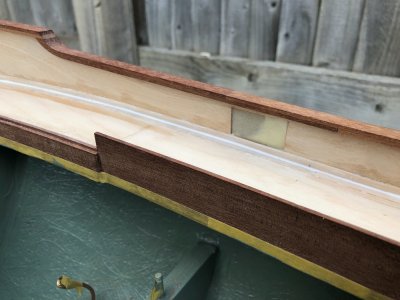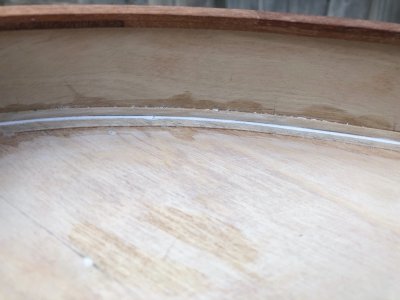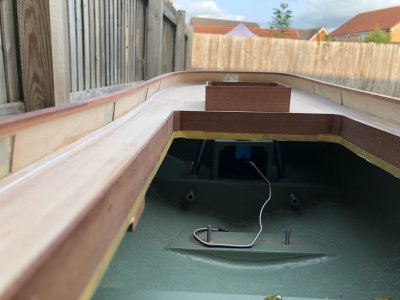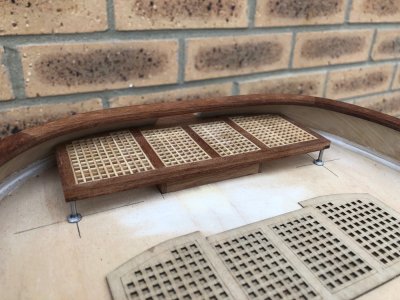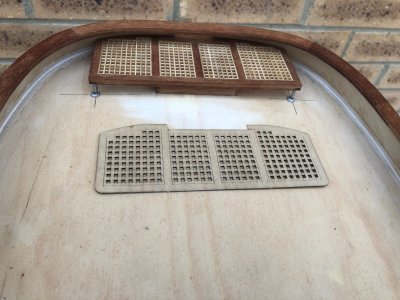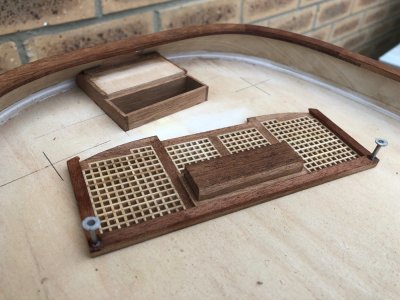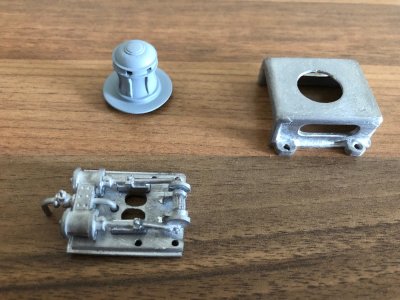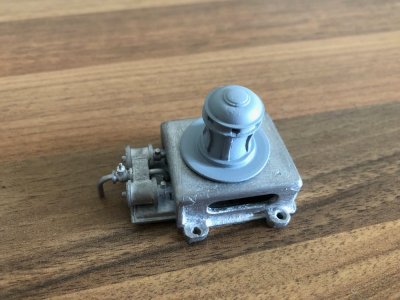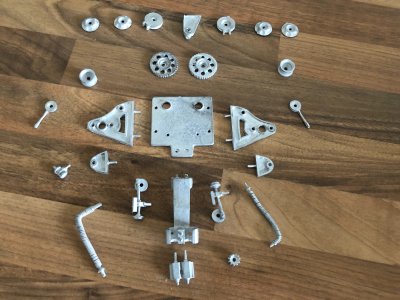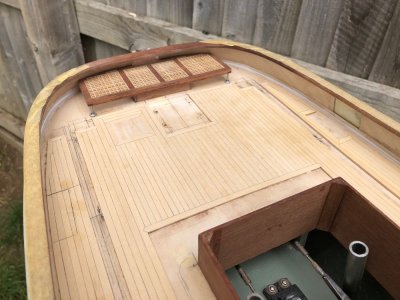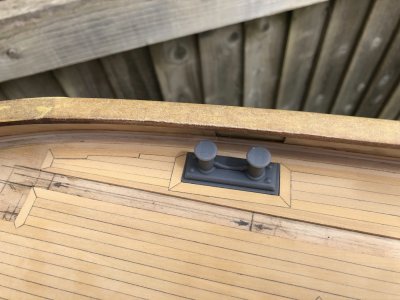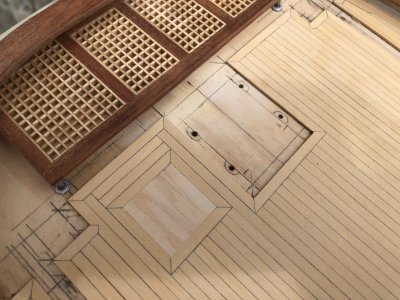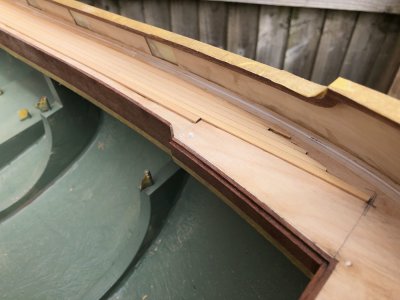A little update to show I am still alive and working on the model

My original intention of getting the model running for the Kirklees steam open day got diverted as I hadn't reviewed the missing screw for one of my engines so I stripped everything out of the hull and I am focusing on finishing the hull before the engine boiler etc go back in. They can then stay in place whilst I work on the superstructure.
I have since sourced some replacement bolts for both engines as these are Allen head as opposed to the kit supplied Cheesehead screws. They are also Stainless and I am unsure that the PM Research screws are not just Bright Zinc Plated.
I have focused work on the Bulwarks and capping rail.
I elected to not cut holes for the scuppers but instead lined the Bulwarks inside with 0.8mm ply with cutouts where the scuppers are. this creates the illusion of scuppers without weakening the hull and also gives me a larger glue area for the cast metal kit scupper doors.
The Hawse hole surrounds have been added on the outside. The holes will be opened up in the middle of the castings then similar castings epoxied to the inside.
I have replaced the kit ply capping with two layers of 2mm Mahogany cut from sheet with overlapping joints between the layers.These will be finished in varnish and not painted black. maybe a little artistic license but I would argue these are timber on the original, not steel.I had intended to use Pear but felt Pear would look to much like a piece of furniture, not a working boat.
The little "window" on the stern is for cable to pass through to a steam windlass. The drawings are a little vague in this area and I have seen at least one model built incorrectly. No cut out, just a shelf with the cable roller guides sat on it.The cutout is not shown on the top elevation but is shown in the stern cross section. Any future builders take note. This detail is work in progress and lots more work to do in this area plus there will be a lot of detail added to the inside of the Bulwarks beyond what is supplied in the kit
